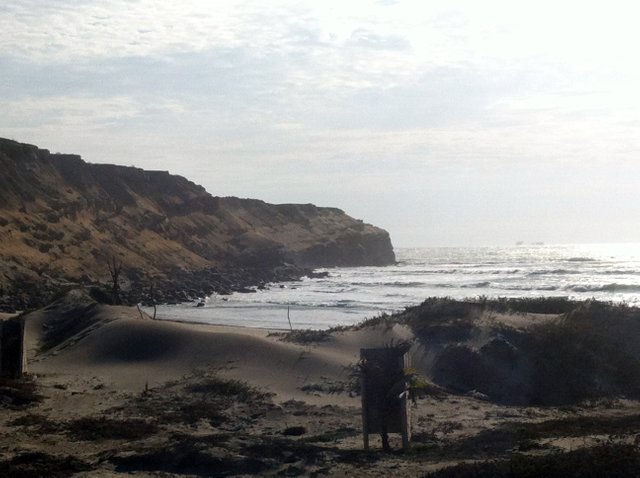
Afternoon View of Cerro Blanco beach (photo by @diego-ecoswell)
On Tuesday, November 13th, we (Julia and Daria, EcoSwell volunteers), together with Diego Almendrades (@diego-ecoswell EcoSwell co-founder and director), had the opportunity to return to Cerro Blanco, following up on our previous visit (https://steemit.com/ecoswell/@ecoswell/trip-to-an-unprotected-dry-forest-priority-conservation-site-within-the-lobitos-district-quebrada-cerro-blanco). This time we were lucky to have Jeremy Flanagan (from http://www.sosperuvianplantcutter.pe/) and his wife Cristina joining us. Jeremy is an ornithologist who specialises in working with the Cortarrama Peruano (Peruvian Plantcutter Phytotoma raimondii). He is a very important partner for EcoSwell as he provides insight and information about the Dry Forest environment, the current threats that it faces and ideas on how to conserve it.
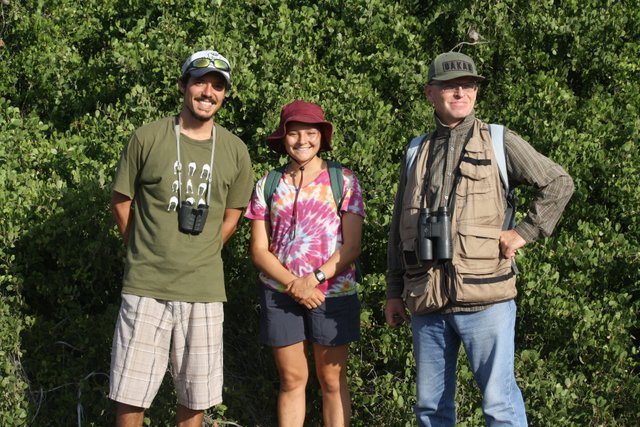
Diego, Daria and Jeremy in front of a huge Realengo (Maytenus octogona) in Cerro Blanco
Almost immediately after arriving we saw a Sechuran fox (
Lycalopex sechurae) walking solo around in the bushes. It was exciting for us because we had not yet seen them in their “natural habitat.” These foxes come by the EcoSwell House at Lobitos at night occasionally, but it was different seeing one in Cerro Blanco; it disguised itself so well we almost didn’t see it.
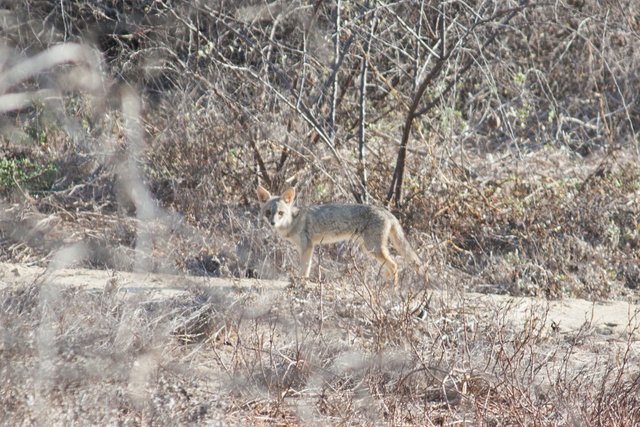
The Sechuran fox we saw at Cerro Blanco! (Lycalopex sechurae)
The fox wasn’t the only animal that we saw. Although there weren’t many, we were lucky to find some native birds in the trees. Unlike the fox, these birds were a beautiful vibrant contrast to the surrounding desert with their different bright colours.
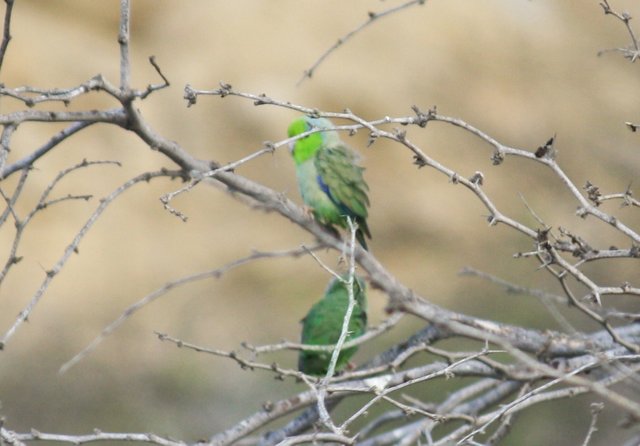
Pacific Parrotlets (Forpus coelestis, endemic to Peru and Ecuador) at Cerro Blanco
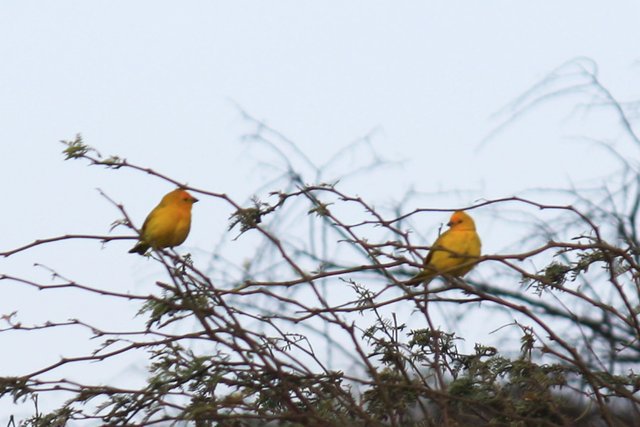
Saffron Finches (Sicalis flaveola) at Cerro Blanco, common in open and semi-open areas in lowlands outside the Amazon Basin
Other birds we were able to see or hear with Jeremy's help included the Necklaced Spinetail (Synallaxis stictothorax, endemic to Peru and Ecuadro), the Tumbes Tyrant (Tumbezia salvini, endemic to Peru and Ecuador), the Cinereous Finch (Piezorina cinerea, endemic to Peru) and the Cortarrama Peruano (Phytotoma raimondii, endemic to Peru). Jeremy noted that in the past he usually saw a lot more species of birds, especially the Cortarrama here, which we know is now endangered. We speculated that this decrease in native fauna was in part due to the selective logging of algarrobo (Prosopis pallida), the dominant tree of the Dry Forest.
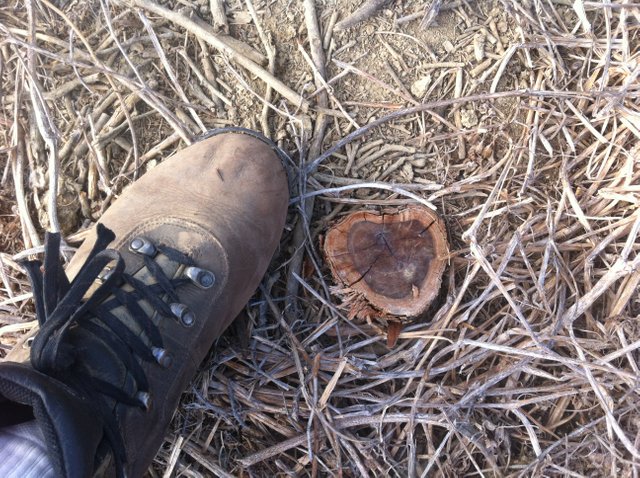
Algarrobo (Prosopis pallida) logging in the Cerro Blanco dry forest, even of very young and small specimens (photo by @diego-ecoswell)
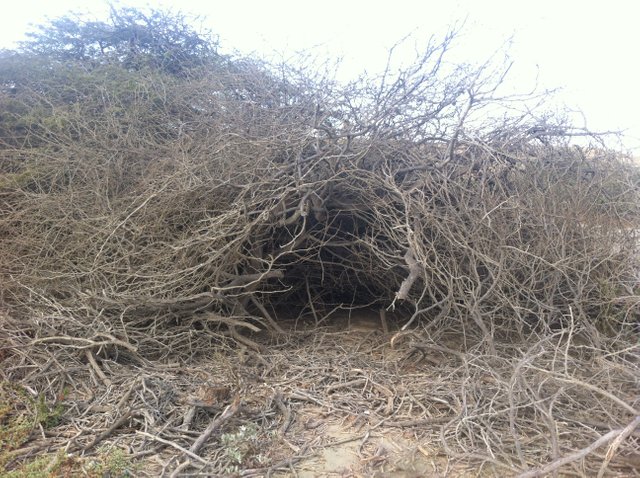 Branches from a chopped algarrobo just piled around the stump. Selective logging leads to deforestation and forest degradation (Photo by @diego-ecoswell)
Branches from a chopped algarrobo just piled around the stump. Selective logging leads to deforestation and forest degradation (Photo by @diego-ecoswell)
Logging wasn’t the only negative human impact we witnessed. As we were walking along we noticed a lot of solid waste on the ground. This waste was not only on top of the ground but embedded, already being buried and swallowed by the landscape. These images show how human waste has become integrated into some parts of the dry forest environment. Sporadic oil spills also scatter the landscape, with many faulty pipes simply abandoned throughout the forest.
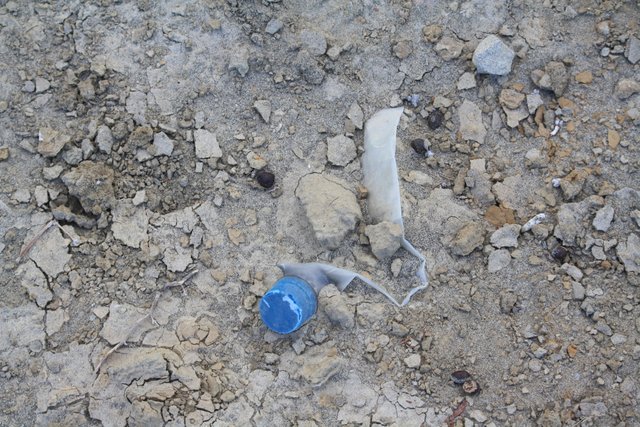
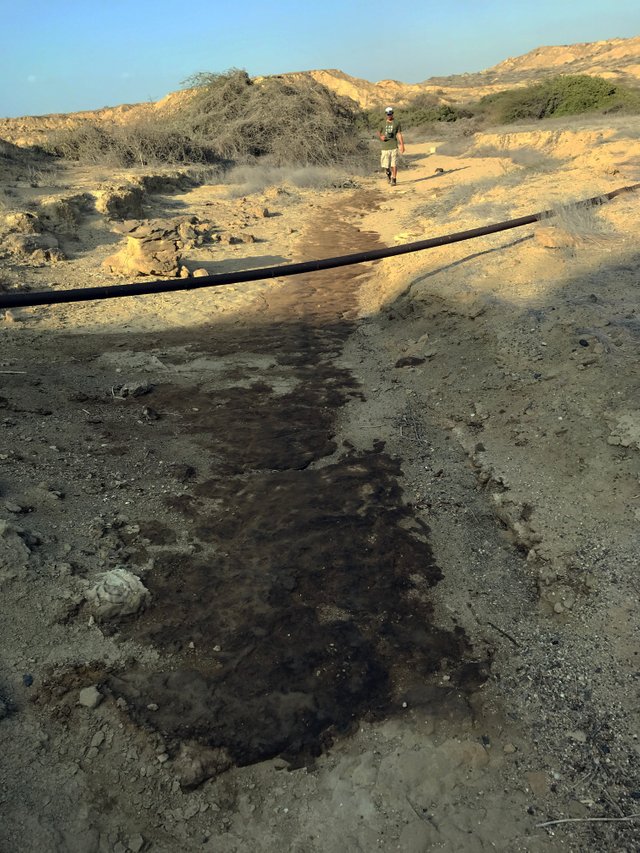
Land covered in waste and old oil spills from broken pipes just lying around irresponsibly exposed.
It’s needless to say that none of us were impressed or happy with the condition of the dry forest. But it wasn’t all doom and gloom. We found some native plants doing well, and we even found a patch of five different native species growing together, nature's ability to adapt and survive!
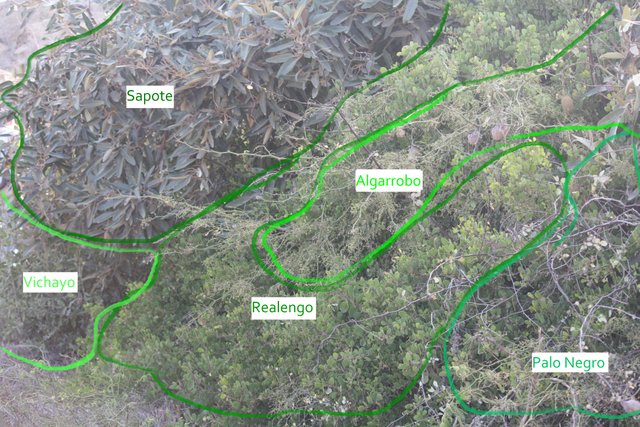
Five different native plant species growing together in a huge bundle in Cerro Blanco.
That said, the majority of the forest was infested by the Luffa plant (Luffa operculata) which creeps and grows over the other plants and trees like a viney spider web. Its effect on the flora can be very destructive as it covers the leaves of other trees preventing sunlight from reaching them. The Luffa plant is not only found in Cerro Blanco but is also found throughout the dry forest of Lobitos and is native to the tropical and sub-tropical Americas.
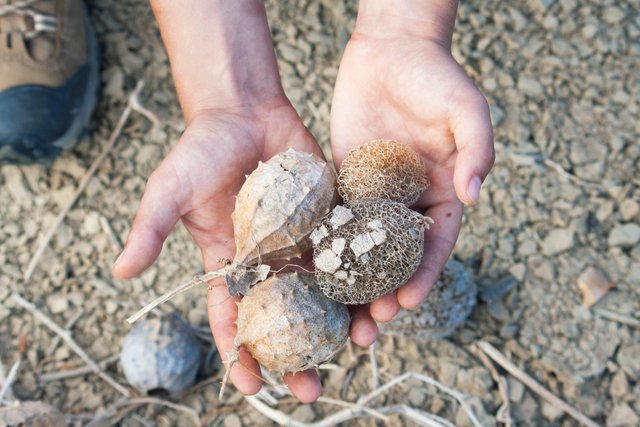.jpg)
Native and invasive Luffa operculata or “jabonilla”, the "sponge-fruit" with seeds inside that cover the desert floor.
Another curious dry forest feature we were able to observe was the radial algarrobo roots which had been exposed in one tree due to soil erosion. This is another adaptation by this tree to this harsh, dry and fragile environment. It not only has roots that grow vertically down to reach the water table, but it also has superficial roots that radiate outwards covering a wide area in order to catch any surface rains or runoff. They are quite impressive to observe, sometimes very far away from their tree!
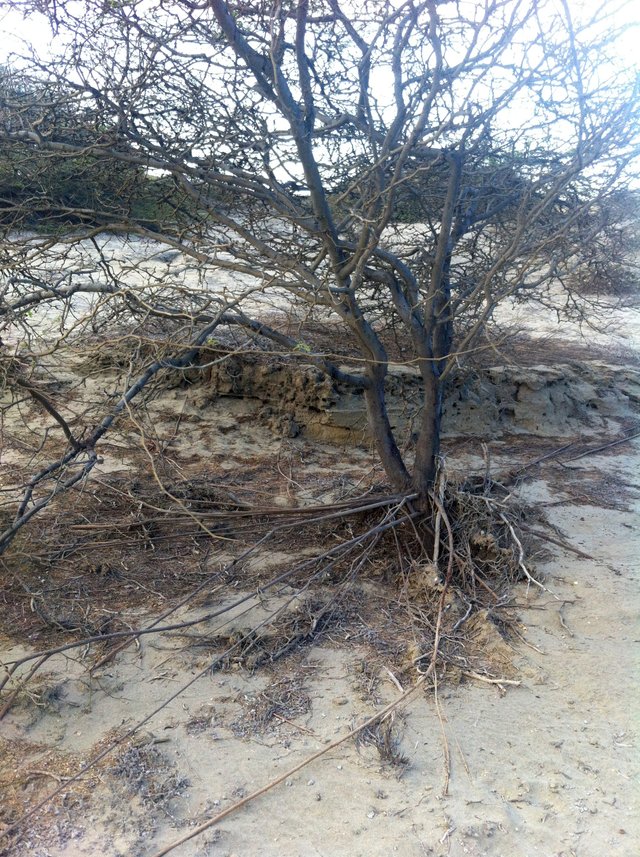.JPG)
Algarrobo radial roots (Photo by @diego-ecoswell)
By the end of our visit, the sun was setting on the ocean and it reminded us how beautiful this landscape is and how important it is to conserve it. We returned to Lobitos and showed Jeremy our own young Zion Sunset Forest reforestation site. As they were only planted in June the plants are still quite fragile and require a lot of care but we hope that as it matures it will attract more native animals like those we saw in Cerro Blanco. More about this very soon, keep in touch!
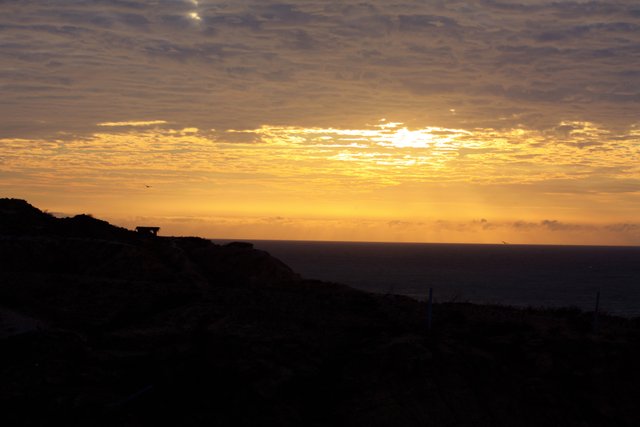.jpg)
The beautiful sunset at Cerro Blanco
Written by Daria Fortin and Julia Bortolotto
All photos taken by Julia Bortolotto unless otherwise stated
@EcoSwell is a for-impact, sustainable development organization based in Lobitos, Peru. Since 2014, we have been working everyday to help coastal communities thrive in unison with nature. If you would like to learn more, please visit our Facebook, website, and follow us on SteemIt!





.jpg)
.jpg)





.JPG)
@ecoswell has been chosen to receive another donation of 11 SBD from the A Dollar A Day project - supported today by @pennsif, @azizbd, @cryptocariad, @cryptocurator, @d-vine, @globocop, @goldendawne, @hopehuggs & witnesses @c0ff33a, @drakos, @helpie, @quochuy, @someguy123, @steemcommunity & @steemcreative - and also @oracle-d
Contact @pennsif if you would like to know more about A Dollar A Day.
The A Dollar A Day charitable giving project.
Thanks for your support @adollaraday, you are the best!
We are delighted to be able to support your great project.
Please do keep updating us with what is going on at Ecoswell.
The A Dollar A Day charitable giving project.
Nice one, thank you! We really appreciate it here at EcoSwell. - Have a great day guys!
That is quite an ecosystem, the dry forest. I learned another interesting plant today, Sponge fruit. It resembles like the sponges on the sea floor. Those birds are pretty. I never expected those colors to be present in a dry forest setting. Too bad the pollution is another cause why that ecosystem is in danger :/
You can learn something new every day here, there is a great biodiversity of flora and fauna in Cerro Blanco.🌱🌱 You should come visit us!! 😄
The Peruvian Dry Forest seem to be rich in biodiversity. I love the color of the bird (Forpus coelestis).
@manka
content creator
You are right @Kedjom-Keku, there is a great biodiversity of flora and fauna here.
Awesome! Fantastic report. Happy to see you finally ran into the Sechuran Fox! It's always a bummer to see oils spills and trash like that though.
Hi @Jocqua. It was hard, but we promised you we were going to take a picture of the Sechuran Fox, so mission accomplished!! 😎🐺
Hope you have a great day @Jocqua!
Well I appreciate it! Hahaha Loved seeing it. You have a nice day as well!
Congratulations @ecoswell! You have completed the following achievement on the Steem blockchain and have been rewarded with new badge(s) :
Click here to view your Board of Honor
If you no longer want to receive notifications, reply to this comment with the word
STOPThat's awesome!!
Hi there. As I mentioned on your previous post, I featured Aidn, the aeroponic, on Steemhunt last week. I got the payout and I have transferred the liquid payout to you. 4.620 Steem plus 0.018 SBD. I just added the SBD to the Steem and rounded off for a total of 4.640 Steem. 😊
Thanks again and may your noble advocate continue to succeed!
That's amazing @Macoolette, thank you very much for your support! You rock!!
You're welcome. That is the least that I can do. 😊